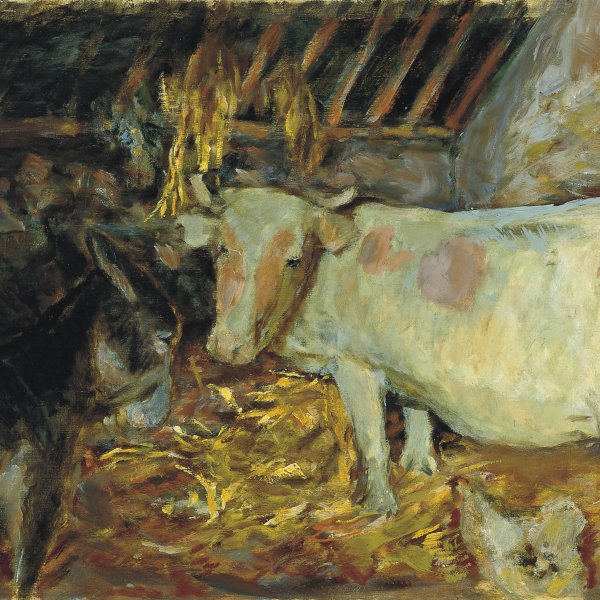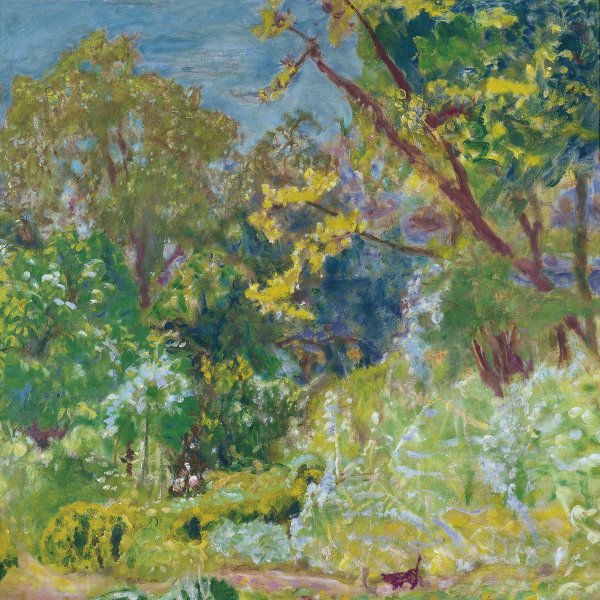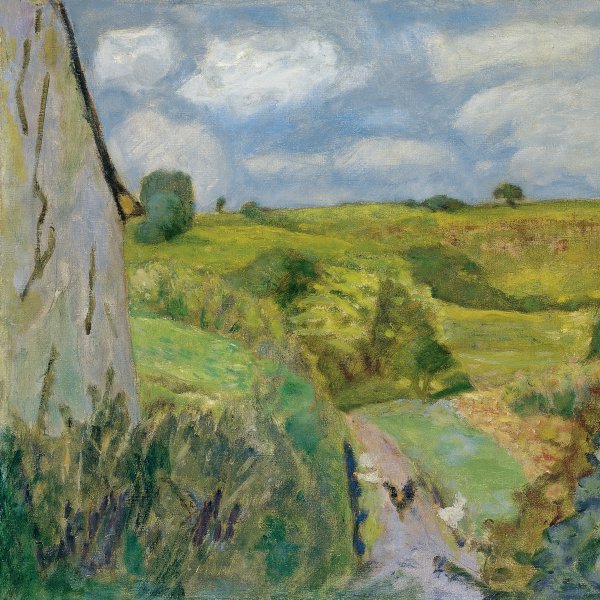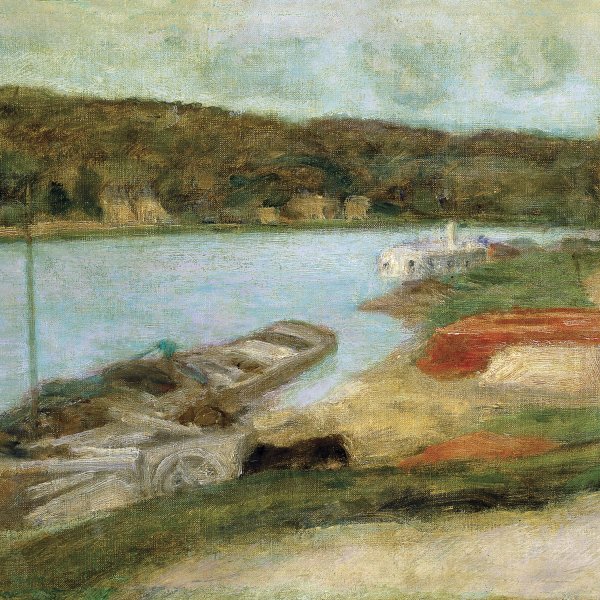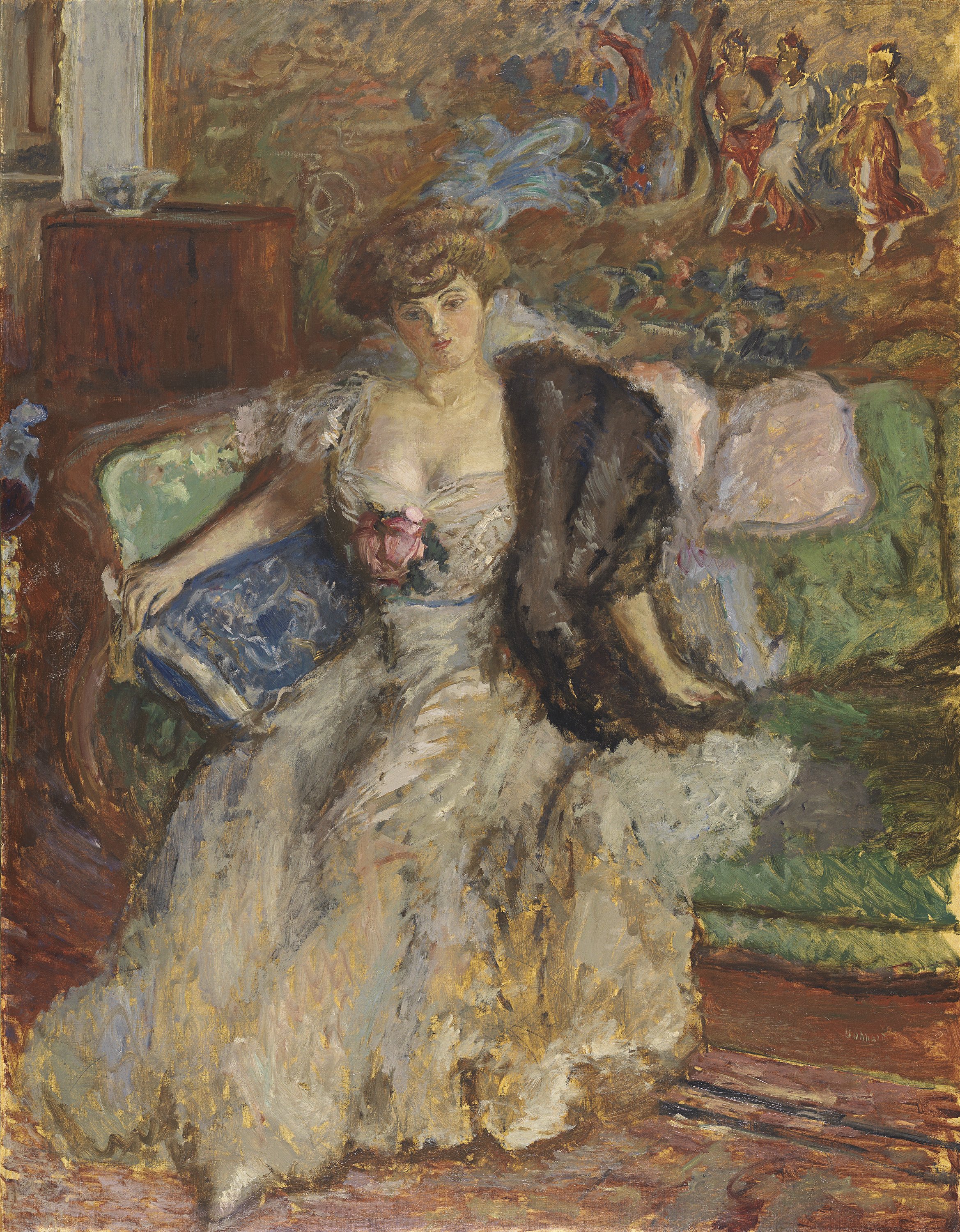Misia Godebska
1908
Oil on canvas.
147.5 x 114.5 cm
Museo Nacional Thyssen-Bornemisza, Madrid
Inv. no.
473
(1970.30
)
Room 33
Level 1
Permanent Collection
Misia Godebska (1872‒1950), the daughter of the Polish sculptor Cyprien Godebski, had become the leading muse of the Paris literary and art world at the beginning of the twentieth century.
Her admirers included the writers Marcel Proust, Émile Zola, Stéphane Mallarmé and Jean Cocteau, as well as the painters Auguste Renoir, Henri de Toulouse-Lautrec and Édouard Vuillard.
Pierre Bonnard, who had frequented her salons together with the group of artists involved in La Revue Blanche, the magazine founded by Misia’s first husband, Thadée Natanson, was later commissioned to do the paintings to decorate the drawing room of her apartment on the Quai Voltaire, by which time she was married to Alfred Edwards, a wealthy publisher. These decorative panels, entitled Pleasure, Games, Voyage and After the Flood, denote a poetic inspiration full of fantasy. It was perhaps then that the artist painted this portrait belonging to the Thyssen-Bornemisza collection, which evidences the new baroque luxury that surrounded Madame Edwards. Both the sitter’s pose and the exuberant décor of the setting, reminiscent of the scenes the artist had painted for her drawing room, recall the eighteenth-century French portrait gallant. The mark of Fragonard or Watteau is apparent both in the voluptuous forms of the clothing and the setting and in the sitter’s melancholic appearance, yet the image has a sensual air that recalls certain works from Renoir’s final period.
Paloma Alarcó
Pierre Bonnard, who had frequented her salons together with the group of artists involved in La Revue Blanche, the magazine founded by Misia’s first husband, Thadée Natanson, was later commissioned to do the paintings to decorate the drawing room of her apartment on the Quai Voltaire, by which time she was married to Alfred Edwards, a wealthy publisher. These decorative panels, entitled Pleasure, Games, Voyage and After the Flood, denote a poetic inspiration full of fantasy. It was perhaps then that the artist painted this portrait belonging to the Thyssen-Bornemisza collection, which evidences the new baroque luxury that surrounded Madame Edwards. Both the sitter’s pose and the exuberant décor of the setting, reminiscent of the scenes the artist had painted for her drawing room, recall the eighteenth-century French portrait gallant. The mark of Fragonard or Watteau is apparent both in the voluptuous forms of the clothing and the setting and in the sitter’s melancholic appearance, yet the image has a sensual air that recalls certain works from Renoir’s final period.
Paloma Alarcó





